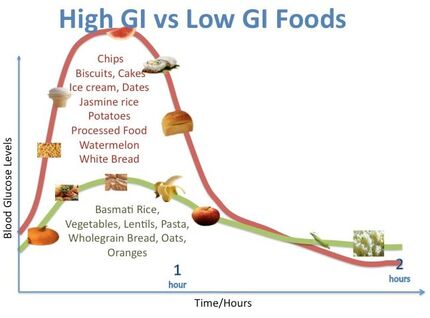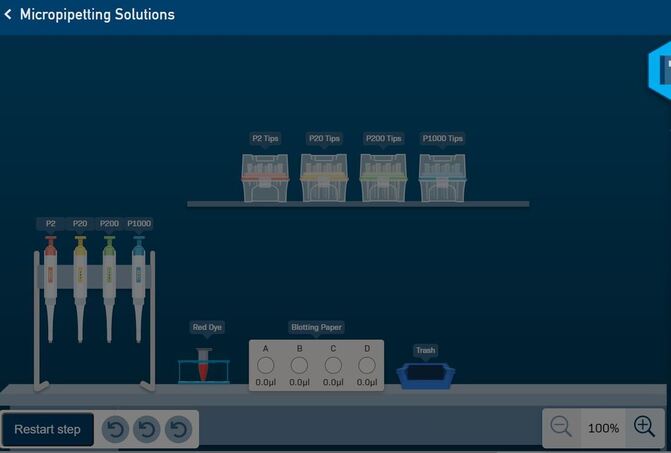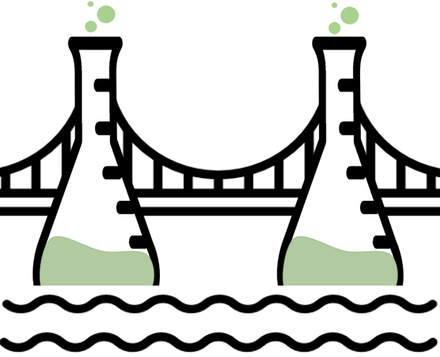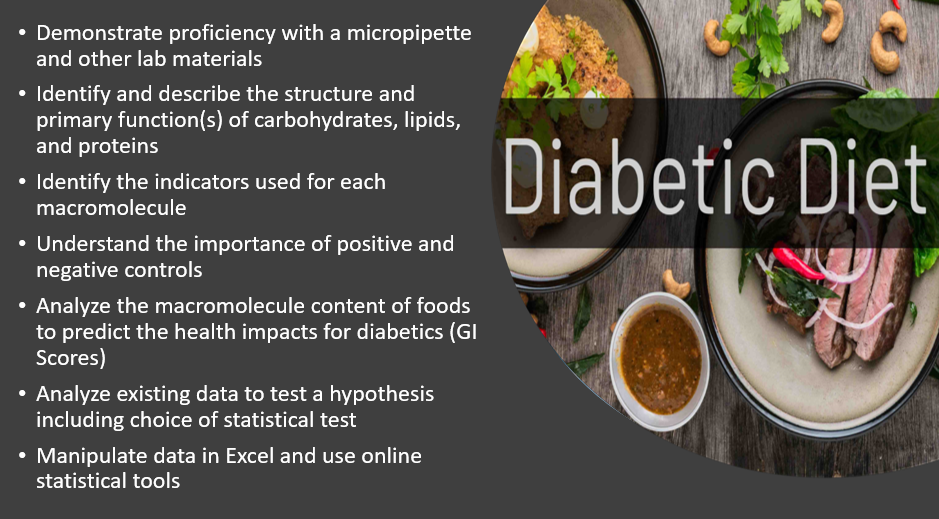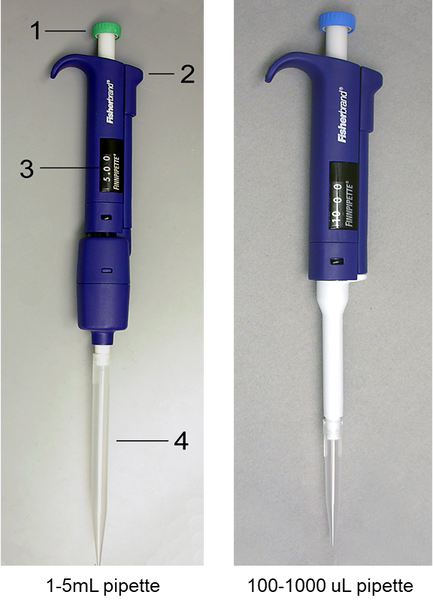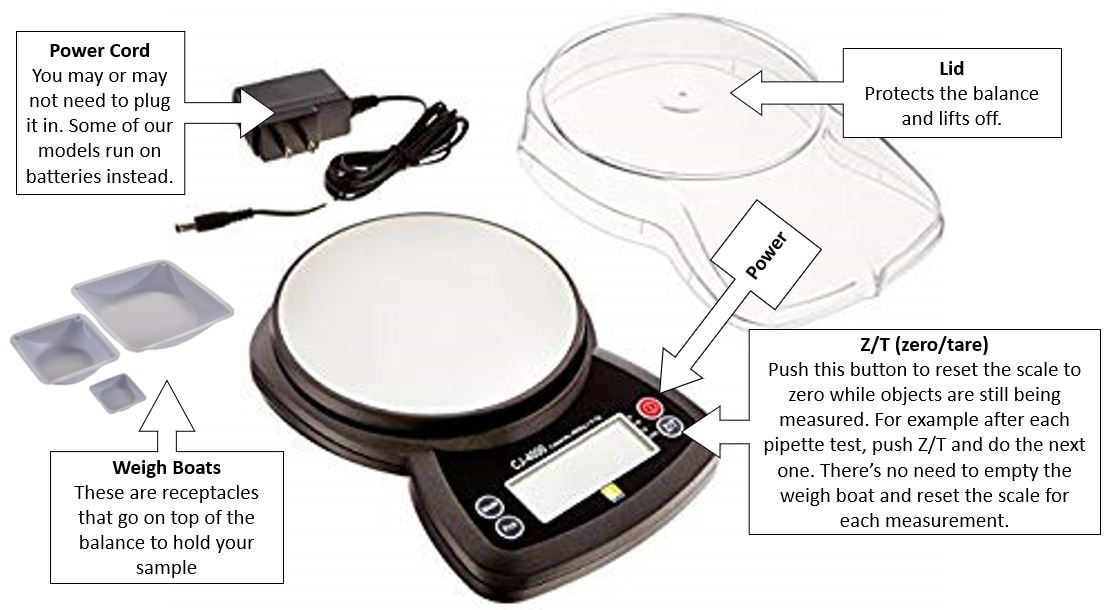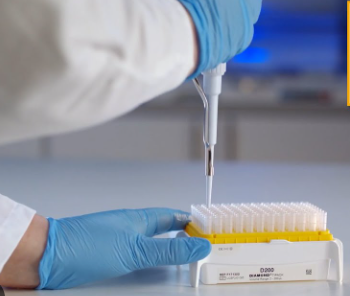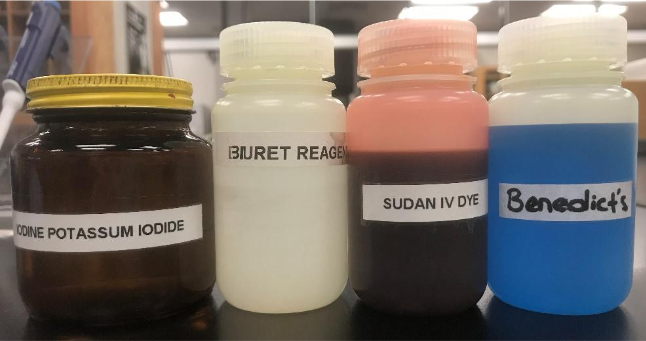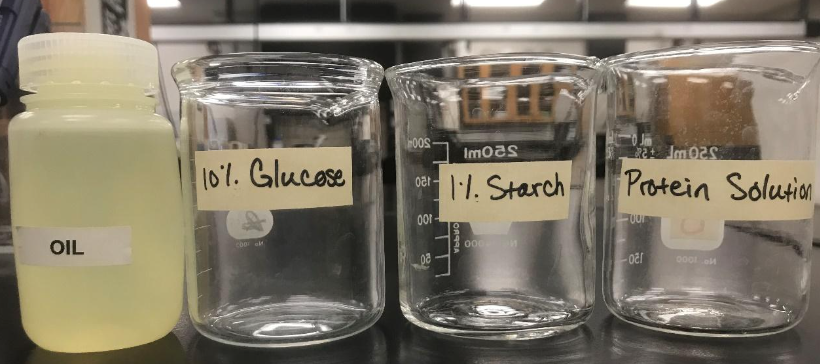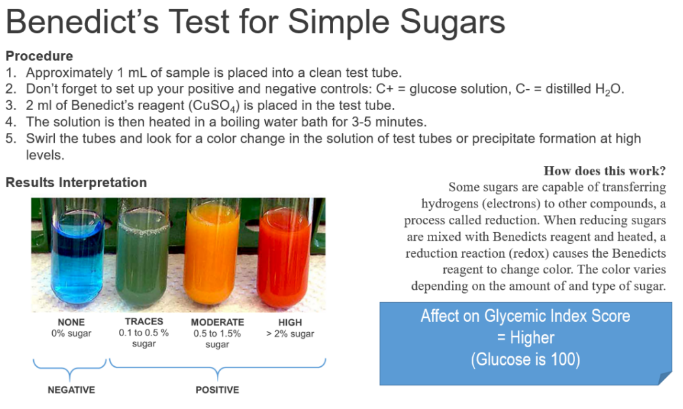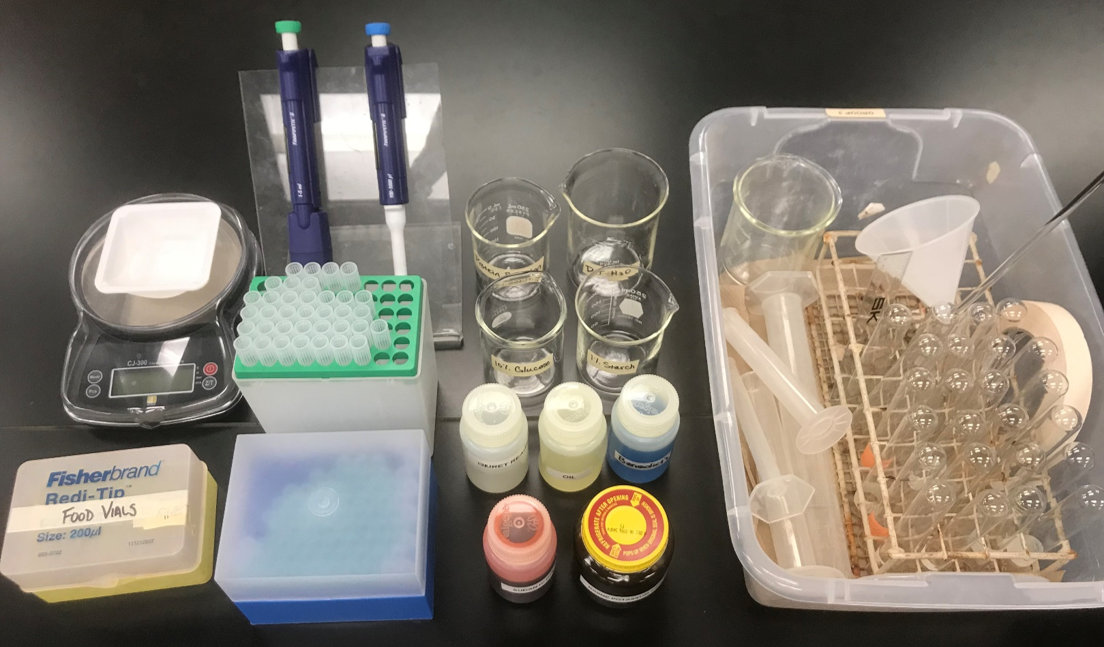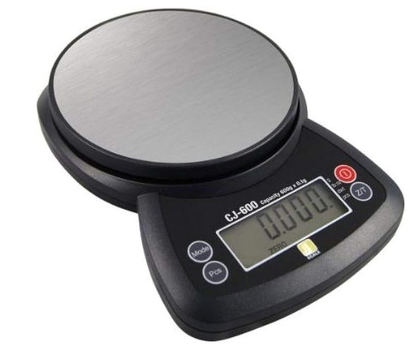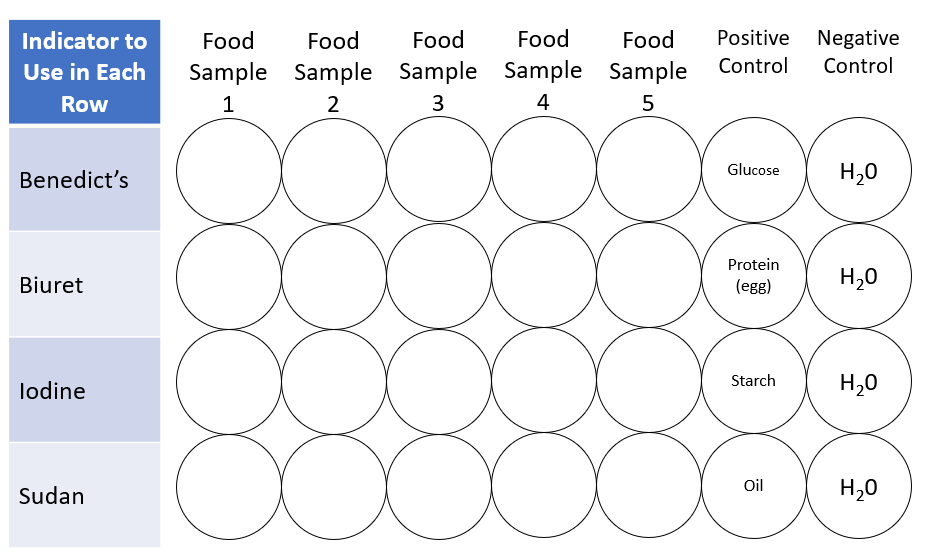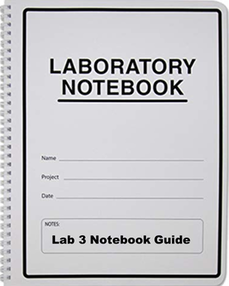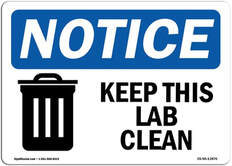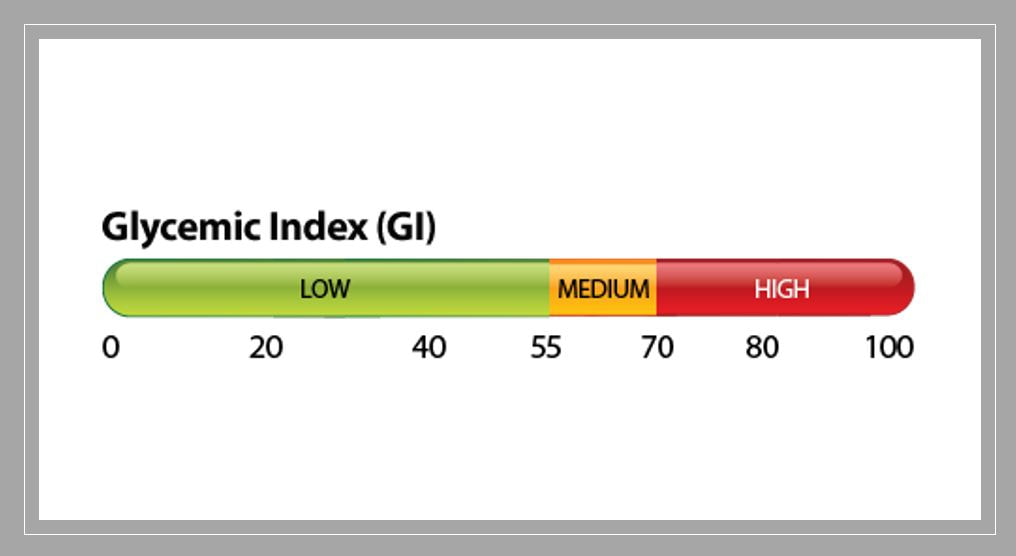-
Introduction
-
Do you know enough?
-
What will we do in lab?
-
LABridge
<
>
1) What is a macromolecule and how can you test for its presence in food?
A marcomolecule (or polymer) is a very large molecule comprised of smaller subunits (or monomers). We tend to recognize four primary types which are highly diverse in atomic make-up and structure and thus, function. We will focus on the first three (carbs, lipids and proteins) in this lab. You should know the basic subunits of each, their shape, general function and a few examples. You need a basic understanding of dehydration synthesis & hydrolysis (or condensation reactions) which build and breakdown macromolecules. You also need to know which chemical test can be used to indicate each specific macromolecule.

Please review the slideshow. It provides an overview of macromolecules, the chemical indicators than can detect each in solution, and the affect of each macromolecule on the glycemic index score (an important dietary consideration for diabetics).

Please review THIS VIDEO on condensation reactions (<2m).
What is the glycemic index?
Remember...diabetes is a disease that occurs when blood glucose (i.e., blood sugar) is elevated because the body isn't making enough insulin or doesn’t use insulin well. The glucose then builds up in the blood, and doesn’t reach the cells where it is needed as an energy source. Over time, having too much blood glucose causes the serious and chronic health problems associated with diabetes.

Please read this quick explanation of the GI from the American Diabetes Association.
|
Because the blood glucose levels in diabetics are not well regulated, their diet becomes much more important. Primarily, diabetics have to be concerned with the frequency and types of carbohydrates they consume. Carbohydrates can be identified by their glycemic index (GI), which is a measure of how quickly the carbohydrate is broken down into its component parts to be used by the body.
However, keep in mind, diabetics don't just manage their diets based on the GI. They must also select foods that maintain their cholesterol and triglycerides levels, blood pressure, and weight management.
|
|
Lab 3 will proceed in three parts:
1) The pipette challenge: You will learn the basics of measurement, including how to correctly transfer liquids using micropipettes. 2) Predict the GI score of unknown food items: In the lab you will be provided with
3) Predict the GI score of unknown food items. Would any of these foods be good for a diabetic? Can you predict the GI score of a food based on its molecular composition? You will analyze your data and predictions vs. the actual GI score of the food items.
|

If you've never used a micropipette before, try practicing a bit in this virtual lab setup. 
Learn about lab glassware and review the metric system as needed. Make sure you understand WHY scientists use the metric system.

|
Lab 3: ProtocolIn today's lab you will learn how to use a micropipette. You will set up experiments to try and predict the glycemic index of unknown food items and, if time allows, you can continue analysis of the diabetes data.
Exercise I. Pipette Challenge Exercise II. Predict the Glycemic Index Exercise III. Continue Analysis |
-
Exercise I
-
Exercise II
-
Exercise III
<
>
Exercise I. The Pipette Challenge.
At the beginning of lab, your instructor will demonstrate how to properly use a micropipette.
Watch carefully and follow along.
|
Review the parts of a micropipette: Diagram at right.
Please keep the following in mind to increase the likelihood of both accurate and precise measurements in lab:
|
Procedure: Your task is to demonstrate your ability to accurately use a pipette.
|
Exercise II. Can you use chemical indicators to predict the glycemic index of unknown food items?
Your task in Exercise II is to develop a series of tests, using chemical indicators, to predict the glycemic index (GI) score of unknown food items. If you have ANY questions about what a macromolecule is, or what the GI is, please refer to the pre-lab above.
Materials. You will be provided a standard lab kit with glassware, test tubes, and a rack. You will also have pipettes, tips and a digital balance. You have solutions of each indicator as well as matching positive controls. You will also have a beaker of distilled water which acts as a negative control for all your tests. A protocol for each chemical indicator in the side bar below.
|
Procedure
|
Indicator Info & ProtocolsAll of these tests are time-sensitive!
A bright yellow/orange result on a Biuret test is common if you wait too long to read it; it is still a NEGATIVE result. A dark brown test result with Benedict's means it might have stayed in the water bath for too long but is a POSITIVE result. |
Exercise III. Would any of these foods be good for a diabetic? Can you predict the GI score of a food based on its molecular composition?
|
Procedure
|
If you finish early, work on your report. LAB 2 Exercise III. has all the details. |
Faculty Spotlight: Dr. Sigrid Jacobshagen, Emeritus

Email: [email protected]
|
Dr. Jacobshagen is extremely interested in clocks; not the kind hanging on the wall or on your phone, but biological clocks and circadian rhythms. She explores these internal physiological regulators, like the sleep/wake cycle, using algae as a model organism. Projects in her lab center on particular types of macromolecules called, photoreceptor proteins that are able to reset these circadian clocks. She is an accomplished researcher in the field of biochemistry and teaches our BioChem courses. She is also heavily involved with the Biochemisty Major. Reach out to her if you found Lab 3 particularity interesting or if you're still trying to decide what track you'd like to pursue in our department. |
KAS citation format:
Mountjoy, N.J 2021. Title of page. Biological Concepts: Cells, Metabolism & Genetics. https://www.121cellmetagen.com. Date accessed (MM/DD/YYY).
Mountjoy, N.J 2021. Title of page. Biological Concepts: Cells, Metabolism & Genetics. https://www.121cellmetagen.com. Date accessed (MM/DD/YYY).
